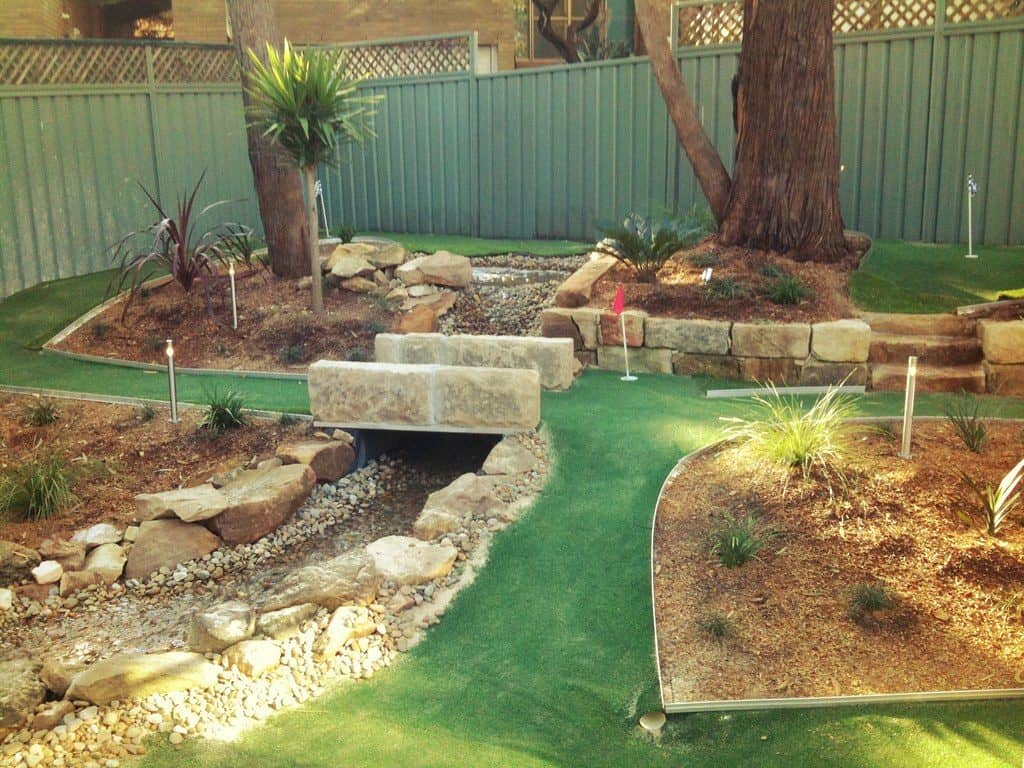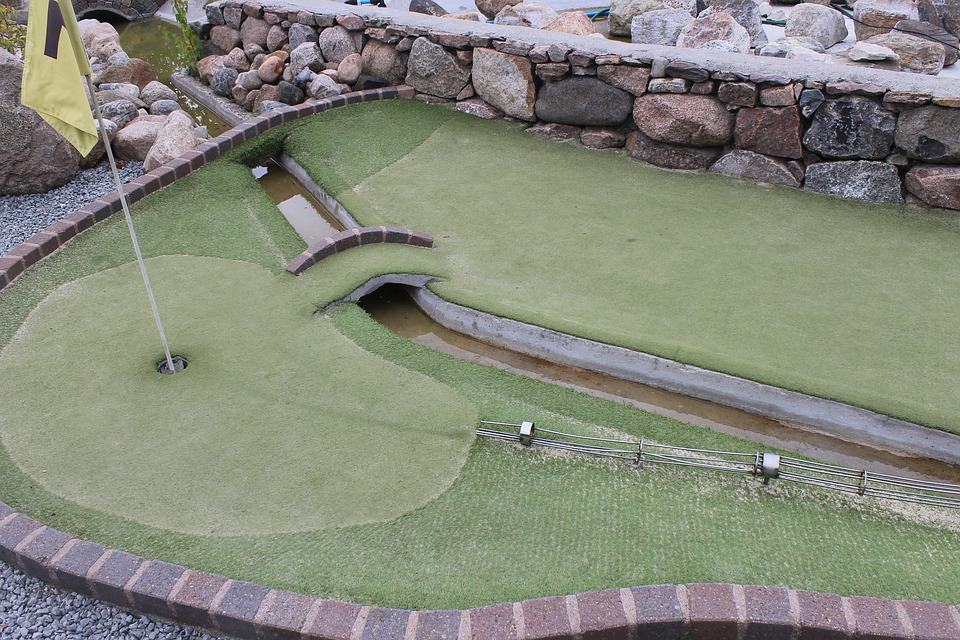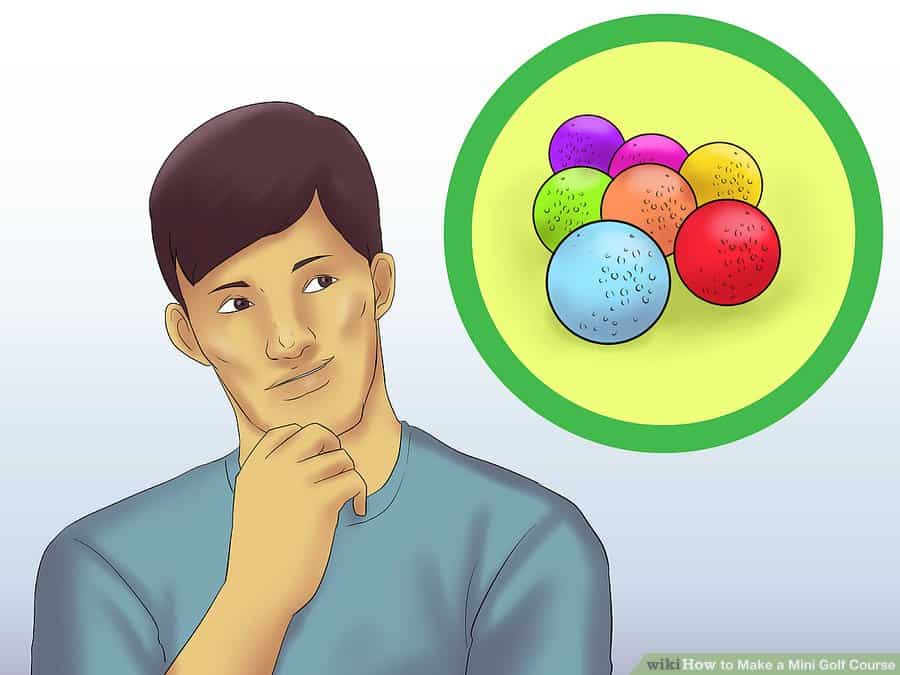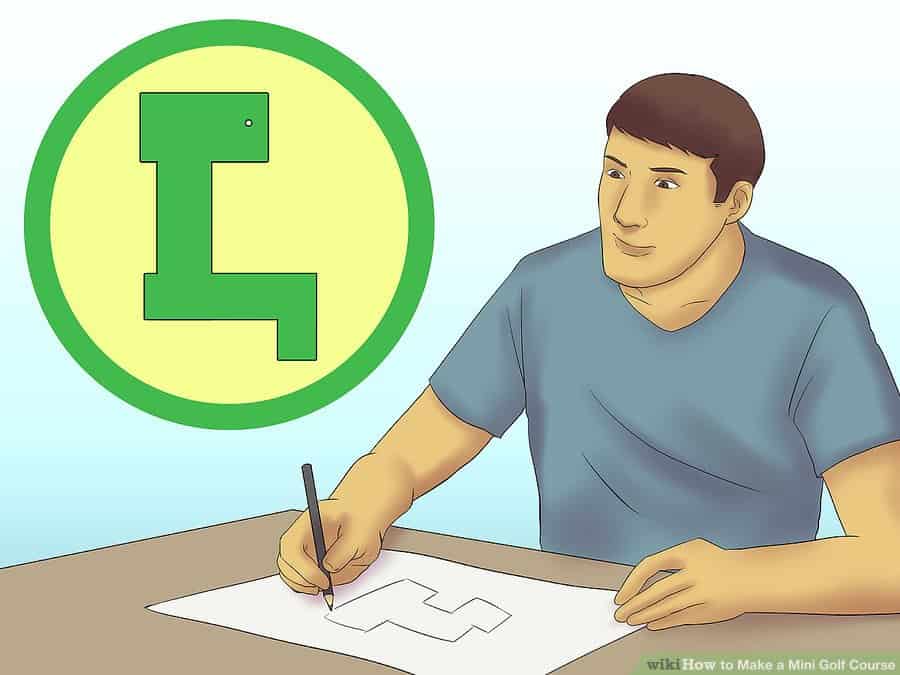As an Amazon Associate, I earn from qualifying purchases. There is no extra cost to you. Thank you if you use our links; we appreciate it! Learn More.
Although the exact origins of golf are unclear, the sport (as we know it today) dates back all the way to 15th-century Scotland. Today, there are roughly 40,000 golf courses in the world, with the majority of them being in the United States, Japan, Canada, and England.
But who says you have to be a member of a club to play a game of golf or travel to a course? You can have a miniature course in your own backyard. Okay, it might not be pro-level or fit for the top competitors in the PGA Championship or the U.S. Open, but it’ll be a pretty great golf course. Well, make that a mini-golf course.

What is a Miniature Golf Course?
Unlike golf, mini-golf dates back to the early 20th century. Mini golf courses quickly spread around the world, and thousands popped up in the United States. Originally, the courses simply resembled a regular golf course but on a much smaller scale. But by the late 1930s, they started to be more complex. They were well landscaped and featured obstacles like windmills, wells, and castles.
Why Build a Miniature Golf Course?

A mini-golf course will be a great addition to your home for a number of reasons.
You’ll have complete control over the course, so you can design it however you want to, and you can update it as needed.
You can also play a game at any time — no need to worry about seasonal closings or daily hours.
Plus, with your own course, there’s no real need to worry about golf etiquette, unless you have friends or coworkers over for a game. And that’s another reason to build a mini-golf course — it’s a great way to entertain your guests!
Read: Best Winter Golf Balls
How to Build a Mini-Golf Course in Your Backyard Guide

Not sure how to get started? Here are our tips for building a miniature golf course in your backyard:
See More: Leg Exercises for powerful Golf Swing
Step 1: Planning

This is your golf course — It can be as complicated or as simple as you want it to be. So if you want it to have a more professional-looking design with turf or painted structures, then go for it! But if a more makeshift design — one that takes advantage of rocks, sticks, and wood — will make you happy, then that’s fine, too. Plus, the latter will be cheaper, which means you won’t worry about it getting damaged from weather, or feel like you can’t mix things up with the course now and then to keep things interesting.
Read More: Best Exercises for senior golfers
But before you can come up with a design, you need to decide where you want to build the course. A lot of this depends on how permanent you want the course to be and how big your yard is. If you’re just building a temporary miniature golf course, then location isn’t such a huge deal — you could build a mini-course on your driveway, patio, or a small section of your backyard.
Read: Adidas Adizero Tour Golf Shoes
Step 2: Designing

Once you’ve figured out where you want to build the course, it’s time to get creative. If you want a course with a few holes or more, sketch a rough design for what you want each hole to look like, and come up with a list of the materials you’ll need to make your designs a reality. If you’re building a course with items you already have on hand or can easily source, this process will be pretty simple because you won’t be too hung up on aesthetics.
Read: What to wear golfing in 50 Degree weather?
But if you want a more elaborate golf course that resembles a professional miniature golf course, you’ll need to spend more time on the design stage. Like a real golf course, you could add in sand traps or take advantage of hilly landscapes to make the course more difficult.
To make it more like a real mini-golf course, you might want to add some cool lighting, plants, landscaping, or build some structures like a mini castle or windmill. This is also a good time to come up with a theme if you want one. For example, you could do an island theme with tiki torches or you could do a haunted castle theme.
Read: Nike Roshe Golf Shoes Review: Best Under $100
Step 3: Gather the Materials Needed & Start Building!

Once you’ve decided on the location and type of course you want to build, you’ll need to figure out the materials needed to construct the course. Look around the house, yard, garage, a thrift store, or warehouse that sells surplus construction materials and goods. Materials like bricks, plywood, buckets, and wooden boards are all great items to use for creating obstacles or ramps. You could even use large rocks, branches, and other items from your yard to create obstacles. These items work for both temporary or permanent courses.
Read: Best Golf Rangefinders
For a temporary course, you might want to use tin cans or something similar for the holes to keep things quick and simple. And if you’re not using any turf or felt in the course, you might have to use an alternative to golf balls like croquet balls or tennis balls to play with.
Read: How To Get Better At Golf Without Lessons?
For a more permanent course, it’s typically best to use felt-covered boards for the course. This can be a great alternative to real grass or turf because it’s easier to disassemble when not in use. If you want the course to be raised off the ground, you’ll need to make sure that you select wood and posts that are strong enough to support people’s weight. Lifting the course off the ground will also make it easier to add in a more professional-looking hole. You’ll just need to drill a hole in the wood and then attach a PVC pipe underneath.
Read: Best Golf Gloves for men, women & Juniors
If you want to use turf or real grass, the course gets more complicated and expensive. With real grass, you’ll need to plant special golf-course-approved grass, like bentgrass, and then maintain it properly. Turf, although pricey, doesn’t need to be maintained and will last for decades. So it really all depends on how much you want to spend in terms of time and money.
This is your time to get creative and have fun with building a backyard miniature golf course. So get to it!
See Also:
- How to make a backyard putting green with real grass?
- How to Clean Golf Club Grips, Shafts, Heads and Rust at Home?
- How to fix Golf Shank?
- How to Putt in Golf?
- Best Gift for golfers
- How to Hold a Golf Club Properly?
- How to Stop Hooking the Golf Ball?
- Black Friday Golf Deals
- What is Footgolf?
Amazon and the Amazon logo are trademarks of Amazon.com, Inc, or its affiliates.
Daisy is the Founder and Editor in Chief of Golfs Hub. She is associated with Golf for more than 20 years. She got the inspiration from her father. She is a very private person & doesn't like to be photographed. She's worked in nearly every job in the golf industry from club fitting to instruction to writing and speaking. Now she is enjoying her retirement from day job... but not from Golf! Daisy lives in southeasternmost part of New York state with her family.






I like that you mentioned how mini-golf courses became more unique by the 1930s and had various obstacles present. I would like to teach my son how to golf this summer, but I am worried that traditional golf may not be able to help him maintain his attention. Maybe taking him to a mini-golf course will help him stay engaged.